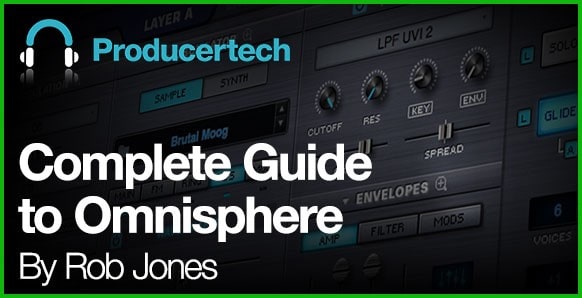
Complete Guide to Omnisphere Course Tutorial
Want to learn how one of the most powerful synths on the market really works? This three and a half hour set of tutorials takes you from the very beginning right through to advanced sound design, explaining all of the synthesizing technology and features included in this cutting-edge instrument. The course delves into all the main stages of subtractive synthesis, covering the oscillators, filters, modulators and FX Rack. A third of the modules are also spent showing how to create different presets, combining all of the techniques into some useful, practical examples to help students put everything into context.
The course is presented in a series of online videos, with accompanying written notes and synth presets to work to, as well as more than £25 worth of audio samples supplied by our sponsor Loopmasters. Don’t miss out on this essential guide to synthesis and sound design for one of the most popular synths on the market today!
Sample Module
Module 1: Introduction and Overview
Introduces the course style and provides an overview of the instrument, covering the main display areas, where synth presets can be browsed, managed and edited. Begins to teach the structure of various presets, briefly explaining what soundsources, layers, parts and multis are.
Module 2: Oscillators
Covers Omnisphere’s oscillator section, when working in synth and sample mode. There is an explanation of the different basic waveform types and their frequency (harmonic) content. Some editing tips are revealed, including detuning and applying of unison voices. All techniques are combined into some examples of simple patch creation.
Module 3: Filters
Teaches about the different types of filters available and the effect they have on the sound. Also provides a guide to the way signals can be routed through the filters, showing some examples of parallel and series setups.
Module 4: Envelopes
Takes a look at envelopes, starting with the most common type, the amplitude envelope, which changes the level over time. Then moves on to another popular use of envelope modulation, where the filter frequency is manipulated.
Module 5: LFOs and Looped Envelopes
Continues looking at modulation by exploring the continuous types featured on Omnisphere, those being looped envelopes and LFOs. Includes a guide to making the classic dubstep wobble bass.
Module 6: Advanced Oscillator Controls
Goes into some of the more advanced oscillator features, including symmetry and hard syncing, frequency- and ring- modulation, and also waveshaping. Lastly, there is an explanation of how to use harmonia mode to create interesting intervals and chords.
Module 7: Reverb, Delay and Modulation FX
Starts to teach about the huge range of effects featured in Omnisphere’s FX Rack, beginning with a detailed look at reverb and delay, before moving on to modulation effects, such as flanger, chorus and phaser.
Module 8: Arpeggiator
Gives a guide to using Omnisphere’s Arpeggiator to create all sorts of rhythmic and melodic patterns, by holding down one or more notes, including a sequenced bassline and glockenspiel part.
Module 9: Making a Fat Bass Preset
Gives a practical example of how to apply many of the techniques taught in order to produce a fat bass preset.
Module 10: Making a Lead Patch
Provides a wealth of tips on how to make a lead patch, with two slightly edited but very different-sounding results.
Module 11: Making an SFX Multi
Shows how to make a multi preset, containing several different FX sounds, including impacts, sweeps and builds.
Module 12: Making a Groove Multi
Shows the full potential of Omnisphere by demonstrating how it can be used to simultaneously produce drums, bass and lead parts, in order to make a deep dubstep groove.
